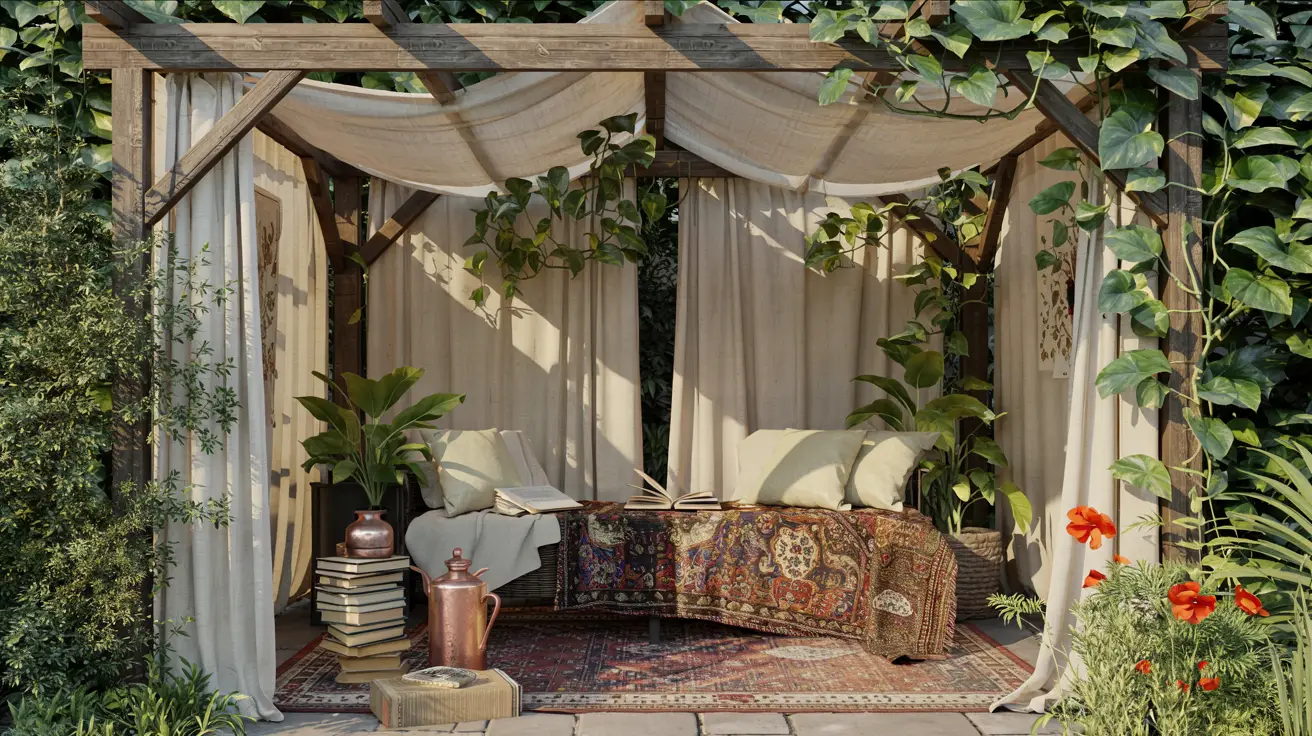
Let me tell you something personal — last summer, our neighbour Dave built a deck that’s basically at eye-level with our garden chairs. Lovely chap, but no one (and I mean no one) wants to make awkward eye contact while deflating a paddling pool or picking up stray socks from the lawn. That’s when I realised: privacy landscaping isn’t just a luxury… it’s a flipping lifesaver.
And honestly, it doesn’t need to mean twenty-foot hedges and a professional gardener named Gareth. You can create a cozy, private family garden with clever plant choices, natural screens, and a few sneaky tricks that make the whole space feel like yours again — without breaking the bank.
This article’s for the mums hiding behind washing lines, the dads trying to grill in peace, and the kids who just want to build mud pies without a driveway audience. We’re diving into twelve real, do-able ways to screen your family garden with privacy landscaping that still looks blooming lovely.
1. Fast-Growing Evergreen Shrubs for Low-Maintenance Privacy

When you want a natural screen without fuss, evergreens are your best mates. Boxwood, viburnum, or podocarpus? They grow thick, they grow fast, and they look tidy all year long. Perfect if you’ve got neighbours who like to water their garden shirtless (we’ve all got one). Line them up along a fence, or plant a curved border for a softer, more intentional look.
If you’ve got little ones running about, make sure the shrubs aren’t spiky or toxic — bonus points if they’re safe for curious hands and paws. Once they’re in, you’ve got a screen that doesn’t need repainting or rearranging every season. Just a quick prune now and then. Honestly, they’re kind of the introvert’s dream fence.
2. Layered Landscaping with Height and Texture
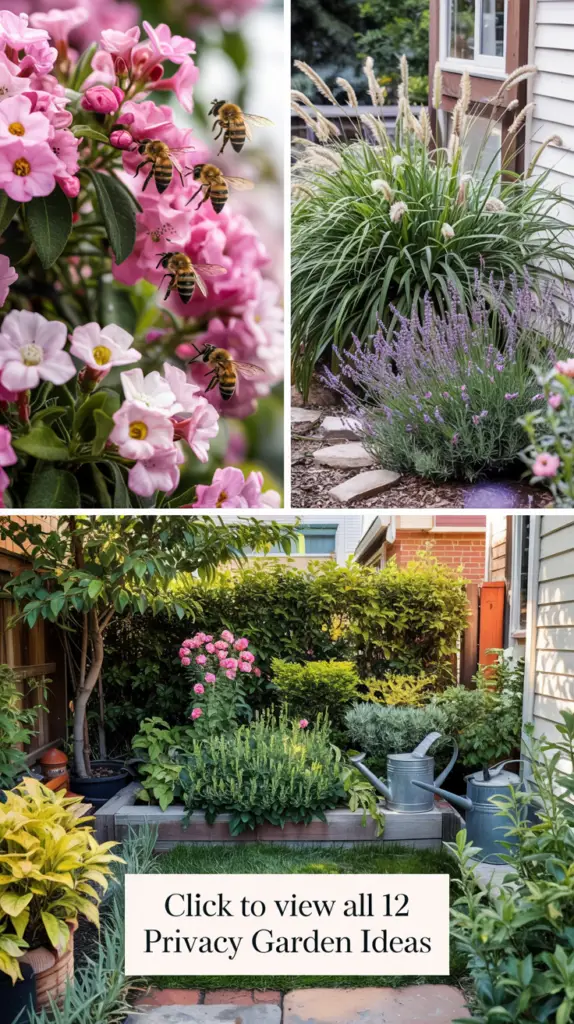
Think of your garden like a tiered cake (just greener). You don’t need one big bulky hedge to block the world. Layer different plants — tall grasses at the back, flowering shrubs in the middle, then shorter ground covers up front. This kind of layout gives you depth and privacy without looking like you’ve planted a wall.
It also makes your yard feel more “designed,” even if you’re just winging it between school runs and Aldi trips. Bonus? It gives pollinators a place to party and keeps your garden buzzing with life. Looks lush, feels private, and totally doable with a bit of planning (and a few weekend trips to the garden centre).
3. Natural Screens with Climbing Plants and Trellises
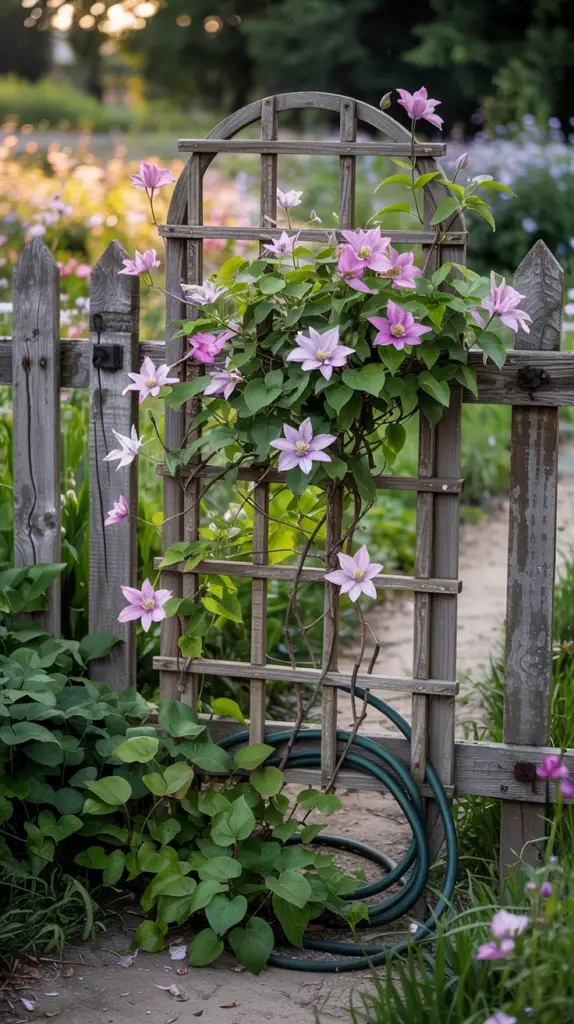
Got a tired old fence or a weirdly exposed patio corner? Slap up a wooden trellis or some wire panels, and let climbers do their thing. Jasmine, honeysuckle, clematis — or even climbing roses if you’re feeling fancy. They grow up, not out, which is great when space is tight and privacy’s needed up high.
You can grab inexpensive trellises or even DIY one out of scrap wood (yes, it’ll probably lean slightly to the left, but that’s called character). Plus, climbers smell amazing in summer. Just imagine sipping lemonade with flowers blooming above your head — way better than looking at someone’s recycling bin.
4. Strategic Placement of Raised Planters or Log Borders
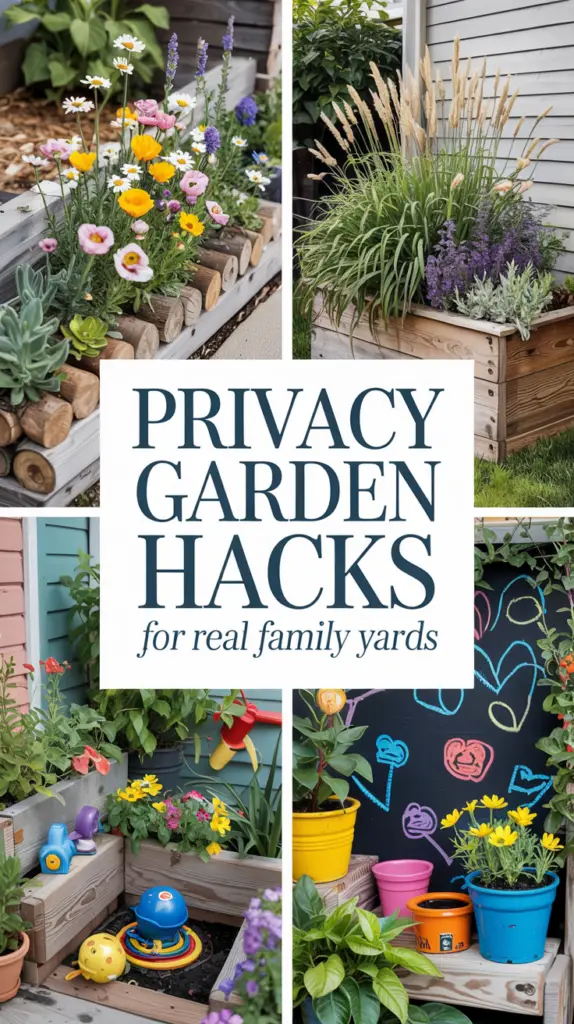
Sometimes privacy isn’t about height — it’s about blocking sightlines. Raised planters and chunky log borders are brilliant for this. They’re like stylish barricades that double as flower beds. Plop one down near a patio, fill it with bold grasses or bushy blooms, and you’ve got a natural screen and a splash of colour.
I once used an old log border to frame the kiddo’s digging zone, and not only did it give them a “secret garden” feel, but it also stopped the dog from sprinting into next door’s veg patch. Practical and pretty. Win-win.
5. Use Interlocking Brick Paths to Define Zones (and Distance)
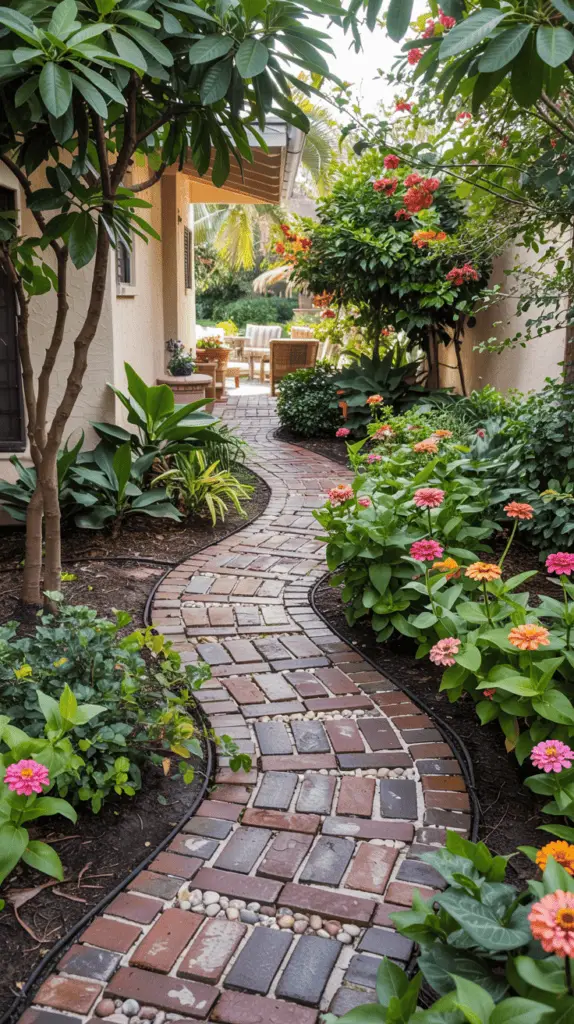
Okay, hear me out — paths can be privacy tools too. If you’ve got a biggish yard, creating distinct zones with interlocking brick or gravel paths helps guide the eye away from the private bits. You’re basically saying, “Look over here at this cute flower bed,” instead of, “Please ignore the chaos behind the trampoline.”
Bricks and gravel are affordable, and you don’t need to pave the entire garden. Just a little winding path between zones — say, from the back door to a tucked-away reading bench — gives your space structure and keeps the peaceful corners a bit more hidden.
6. Privacy Fencing That Doesn’t Look Like Prison Bars
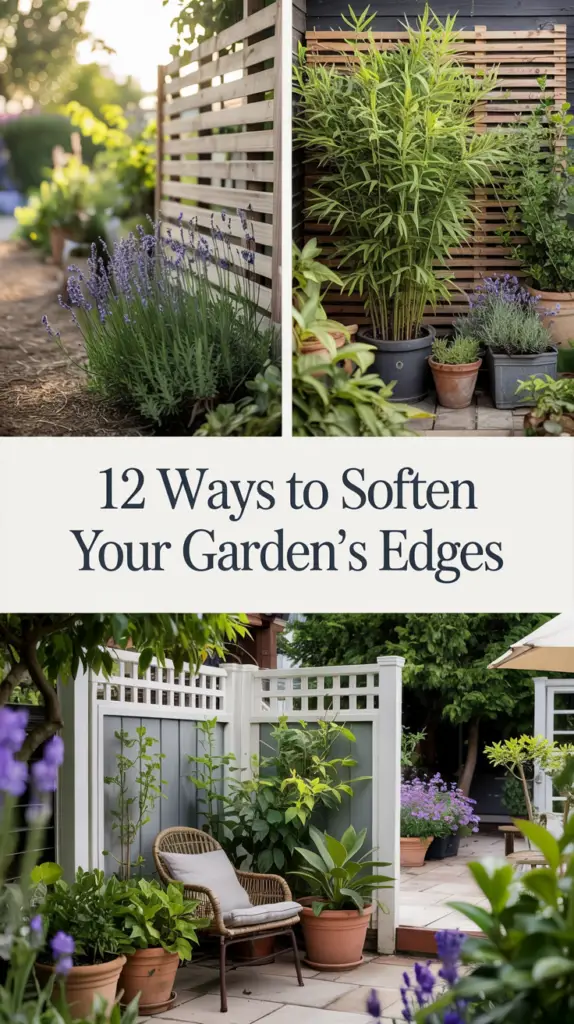
I know, I know… fencing sounds expensive and boring. But hear me out — a short stretch of stylish fencing in just the right spot? Total game-changer. Think horizontal slats, bamboo panels, or even painted lattice. It can soften your space while shielding off the nosy bits. And if full fencing isn’t in the budget, a corner screen works just as well to block awkward angles (or that one neighbour who always wants a chat).
Paint it in a calm, neutral tone to blend in or go for a soft green if you want it to feel invisible behind the plants. It doesn’t need to scream “look at me!” It just needs to give you that little bubble of peace when you’re reading on the lounger or sorting out suncream squabbles.
7. Corner Privacy With Tall Pots and Large Patio Plants

If you rent or just don’t want to commit to digging holes, big planters are your best friend. Grab a few tall pots — you can get plastic ones that look like ceramic for half the price — and fill them with tall grasses, bamboo, or small trees like olive or ficus.
Cluster them around your dining area or near the kids’ play zone to carve out a private corner. They’re portable too, which means you can shuffle them around depending on where the sun (or your chatty neighbour) lands that day. I once used potted canna lilies to block off our bin area. Unexpectedly gorgeous and made me feel like I lived in a boutique hotel. Even if the dog kept weeing on one.
8. Front Yard Privacy That Still Looks Friendly
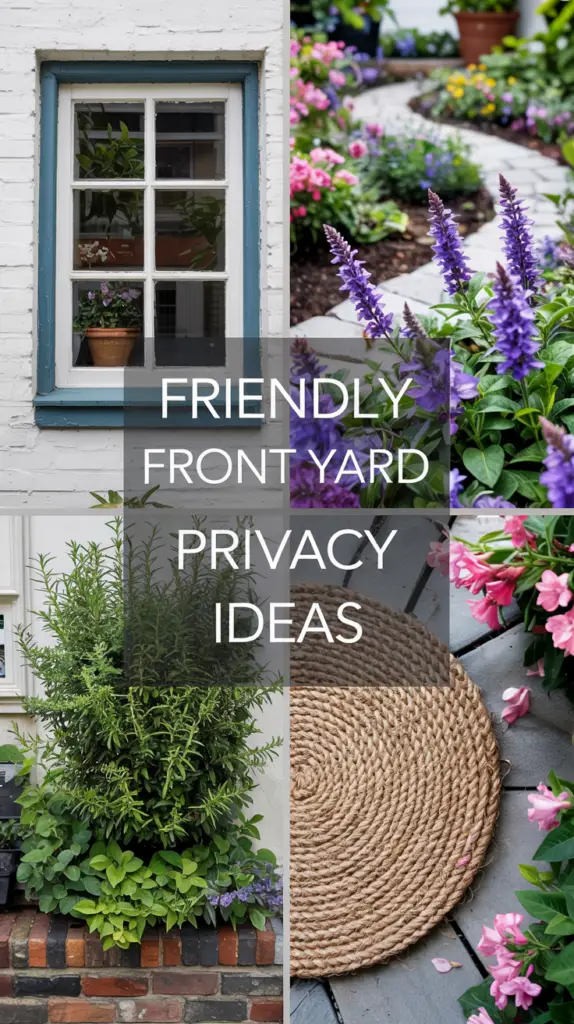
Just because it’s the front yard doesn’t mean you want every dog walker peering in. But a tall fence out front feels… aggressive, right? Instead, go for soft hedges, layered plantings, or even a little garden wall with flowers spilling over the top. It feels welcoming and keeps the chaos of daily life a bit more hidden.
We added a curved flower bed under our front window, filled it with rosemary, lavender, and salvia, and now it blocks direct views and smells like a dream when the breeze hits. Plus, no one can tell if I haven’t cleaned the porch in weeks.
9. Create a Kid Zone That’s Partially Screened
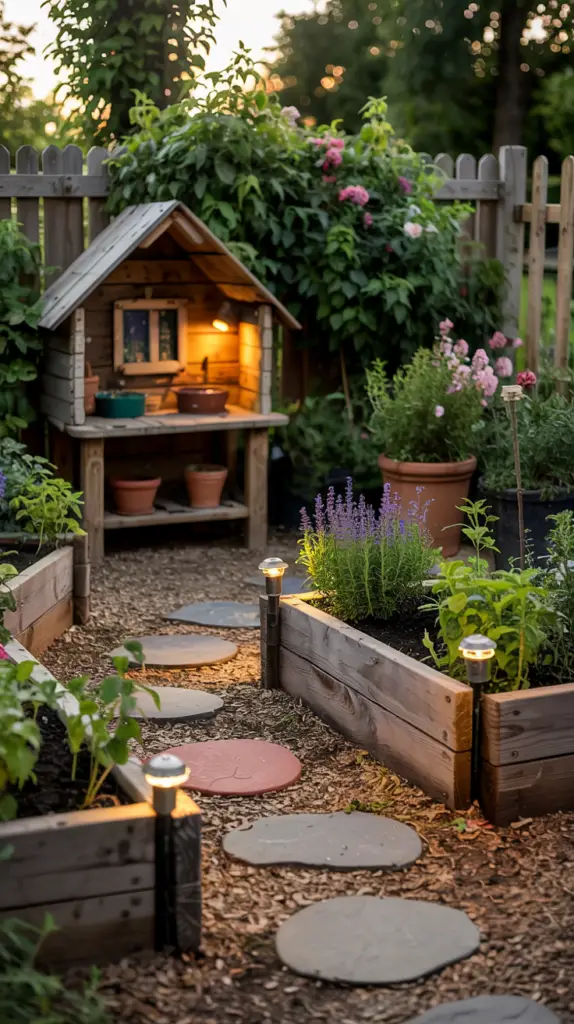
Kids want freedom. Parents want shade. Neighbours want peace. The compromise? A semi-screened play corner that lets light in but adds just enough privacy. Use mesh screens, short hedges, or even a row of raised beds to section it off.
Let them have their digging patch or mini mud kitchen, but tuck it into a back corner with some visual separation. Add solar lights, a few stepping stones, and honestly? It becomes a magical little hideaway that doesn’t mess with the grown-up vibes in the rest of the garden.
10. Mix Textures and Plant Shapes for Visual Distraction
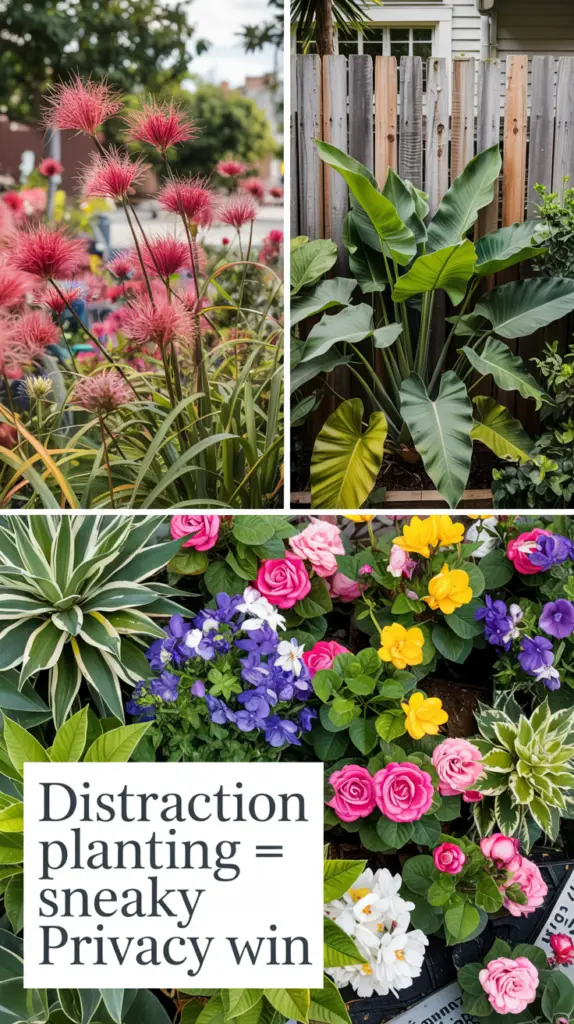
Not every screen has to be tall — sometimes it’s about mixing textures and shapes to distract the eye. Tall grasses like fountain grass or muhly, shrubs with round forms, or leafy tropical plants all jumble together to make your yard feel lush and layered.
The trick is to plant close together, vary the leaf shape and height, and maybe throw in a bright bloom or two. It keeps the eye busy and stops anyone from focusing on any one spot — especially handy when you’ve got a garden toy explosion one side and a washing line on the other.
11. Add Height with Pergolas and Hanging Greenery
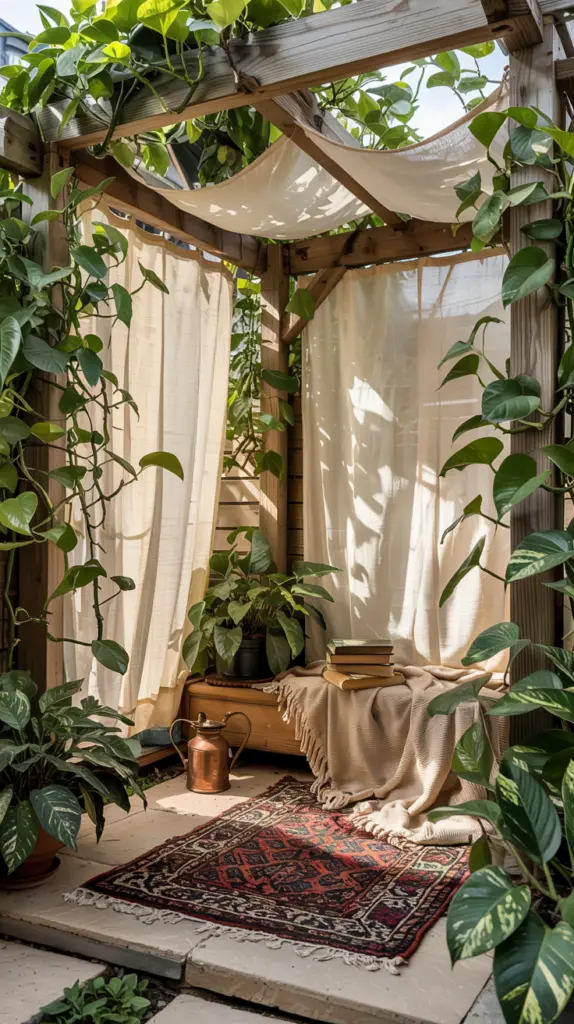
If your garden feels flat and open, vertical elements like a pergola can help create a feeling of enclosure without blocking all the light. Even better if you add hanging plants, lightweight curtains, or string lights. It becomes your own little shaded nook — part privacy screen, part summer escape.
We built ours with leftover timber, and while it’s a little wobbly in the wind, it’s also the only place I get five minutes of peace while the kids run wild. Add a chair, a jug of iced tea, and you’ve basically got a garden spa. (OK, a spa with mosquitoes and chalk dust, but still.)
12. Use Narrow Garden Beds Along Shared Boundaries
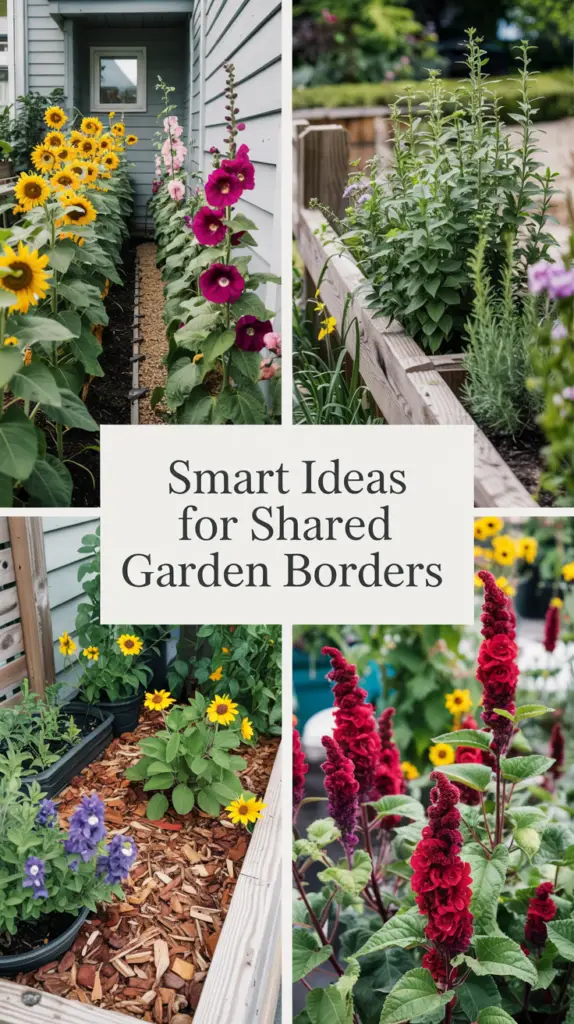
Sometimes, all you’ve got is a slim strip between you and the neighbours. Use it! Narrow garden beds with climbing plants or tall perennials like hollyhocks, sunflowers, or even amaranth can give you a lot of coverage without needing much space.
Layer in a few low-maintenance shrubs or drought-tolerant ground cover, and suddenly that awkward strip becomes a privacy wall and a blooming feature. If you can throw in a few edible plants like kale or herbs, even better — beauty and dinner in one. Now that’s the kind of garden multitasking I can get behind.
Final Thoughts
If you’re anything like me, you want a garden that’s safe, cosy, and not constantly on display like some kind of outdoor stage. Privacy landscaping isn’t about shutting the world out — it’s about making space that feels like yours. A place where you can have messy hair and burnt sausages and still feel at home.
With a few well-placed plants, some clever screening, and a bit of trial and error, your garden can become a little retreat. Even if the dog is barking, the kids are sticky, and you’ve run out of pegs again — at least you’ve got some blooming lovely greenery to hide behind.
